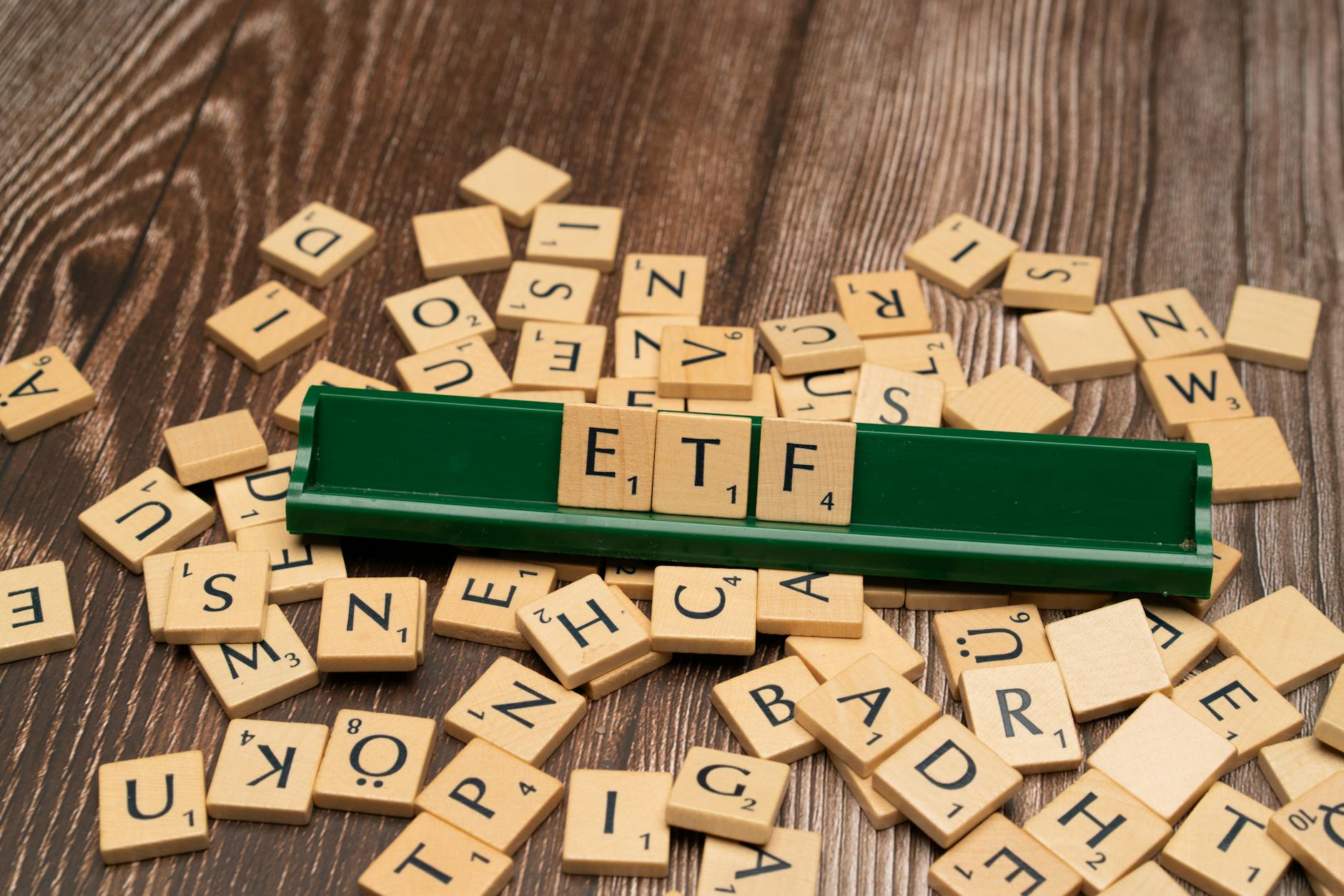Mastering Your Investments: ETFs versus Index Funds
Popularity Comparison
When sizing up ETFs and mutual funds, let’s see how they’re sizing up among investors. Both offer perks that draw different types of money-makers.
ETFs vs. Mutual Funds
Exchange-Traded Funds (ETFs) and mutual funds tick a lot of boxes for investors but in their own quirky ways. ETFs, which really took off in the early 2000s, are like stocks you can buy and sell whenever the market’s open (Investopedia). This makes them super appealing for folks who like to wheel and deal at their own pace.
Mutual funds? They’re old-school, around since the 1920s. The big dog of passive investing, index funds, stepped into the scene in 1976 thanks to Vanguard’s Jack Bogle (Investopedia). With mutual funds, prices are locked in once a day at the end of trading, which might limit your dance moves but can keep things steady for the risk-averse.
Now, think about costs. ETFs usually skip those pesky load fees and keep ongoing costs lower than mutual funds. But watch out! If you’re swapping ETFs a lot, those brokerage fees can sneak up on you (Fidelity).
Growth Trends
Looking at how ETFs and mutual funds are growing gives us a peek into what investors are vibing with lately. In 2023, a whopping $598 billion cozied up to ETFs, while mutual funds couldn’t stop $440 billion from walking out the door (Investopedia).
ETFs have been climbing the popularity charts, with their assets hitting $5.4 trillion by the end of 2023. People are loving them for their flexibility, low costs, and market-open trading. Mutual funds are still in the game but seeing some folks slip away due to steeper costs and tougher trading terms.
| Year | ETFs Assets | Mutual Funds Outflows |
|---|---|---|
| 2021 | $1 trillion | N/A |
| 2023 | $598 billion | $440 billion |
The big bucks going into ETFs show a swing that’s favoring these newer investment options over the classic mutual funds.
For those curious about how these choices stack up against gold or the tug-of-war between bonds and stocks, check out our deep dives into advantages of investing in gold and bond vs. stocks popularity comparison for more juicy details.
Expense Ratio Analysis
Let’s break down the money talk about different investment options and which one gives you more bang for your buck. We’re talking about the cost differences between ETFs and mutual funds, like the budget-friendly index ones and the turbocharged managed ones.
ETFs Costs
Think of ETFs as the bargain bin of investments. They usually have cheaper price tags compared to mutual funds. Especially the index ones – they just follow the leader (or benchmark) without needing anyone to shuffle the cards. Less shuffling equals less dough coming out of your pocket.
| Type of ETF | Average Expense Ratio (2023) |
|---|---|
| Index ETFs | 0.48% |
| Active ETFs | 0.73% |
Numbers from Fidelity
Why are ETFs the coupon kings?:
- Management Style: No need to pay the piper much when you’re just following along.
- Operational Efficiency: Simple operations mean you save a few pennies.
- Volume: When everyone’s in the game, it drives down costs.
For more on why ETFs might be your next best friend, check out Fidelity’s insights on how they’re low-cost and flexible for your trading needs.
Mutual Funds Costs
Now, mutual funds, especially the ones with a lot of cooking going on, are like the gourmet menu. You pay a premium for all that fancy stock-picking and strategy crafting.
| Type of Mutual Fund | Average Expense Ratio (2023) |
|---|---|
| Index Mutual Funds | 0.81% |
| Actively Managed Mutual Funds | 1.02% |
Data borrowed from Fidelity
Why you might end up paying more with Mutual Funds:
- Management Fees: It’s like hiring a personal chef – someone’s gotta pay for the expertise.
- Research Costs: It takes a village (of analysts) to make smart picks.
- Distribution Fees: Marketing and operational dollars add up.
Despite the steeper price tag, some folks like the security blanket that expert managers offer. And if you want to compare ETFs and mutual fund costs down to the nitty-gritty, give TD’s overview a whirl.
So, if you’re in the market for options that save rather than splurge, ETFs and index funds come in as the wallet-friendly choice next to actively managed options. If you want to dig more into different paths like bonds vs stocks, catch our article on their popularity right here.
Trading Mechanism
When checking out ETFs and index funds, it’s smart to get how trades work with each. This affects how easy it is to buy or sell, the wiggle room you’ve got, and how each fits different plans for making your money grow.
ETFs Trading Flexibility
ETFs (Exchange-Traded Funds) bring lots of wiggle room. They’re like a mash-up of stocks and mutual funds—you get to trade them on exchanges anytime during the day, making it easy to catch stuff as it happens in the market. This means you’re not stuck waiting for the end of the day (TD).
- Intraday Trading: Just like regular stocks, ETFs give you the freedom to buy and sell anytime the market’s open. Handy for those keeping an eagle eye on market shifts.
- Liquidity: Trade any time during the day, which means you can hop in and out of the game without a hitch.
- Price Fluctuation: Prices for these guys go up and down all day long depending on what folks are willing to pay or sell for—a chance to snag a deal or turn a quick profit (Business Insider).
Here’s how trading all day stacks up against waiting till day’s end:
| Feature | ETFs | Index Funds |
|---|---|---|
| Trading Times | All day long | End of the day |
| Price Setting | Swings with the market | Set once daily |
| Liquidity | High | Moderate |
Mutual Funds Trading Limitations
Now, mutual funds or index funds—these guys play by different rules. You can’t just buy or sell mid-day; you’ve gotta wait till they set the price at day’s end, what’s known as the Net Asset Value (NAV). This is a big deal if you’re picking between ETFs and mutual funds (Investopedia).
- End-of-Day Trading: Want in or out? You’ll have to wait until the bell rings at day’s end. Not great if you’re aiming to make the most of mid-day price jumps.
- Price Stability: With these, you know the price you’re getting at the end of the day. Good for those who want less excitement and more predictability.
- Limited Flexibility: You can’t make moves while the market’s humming. Not ideal for traders who need that snap-action trading.
Check out the differences when you line up ETFs against index funds:
| Feature | ETFs | Index Funds |
|---|---|---|
| Trading Frequency | All day long | End of Day |
| Execution Time | On-the-spot | After market closes |
| Price Variation | All over the place | Set in stone at NAV |
Knowing how these work differently can help you pick which to go with based on how you like to trade and your overall investment game plan. Peek at our other guides on investor choices and fund suitability for more good stuff.
Tax Efficiency Examination
Peeking into tax efficiency, you’ll want to understand the ins and outs between Exchange-Traded Funds (ETFs) and mutual funds. Knowing these details can give investors a leg up when deciding how to grow their money.
ETFs Tax Advantages
ETFs often get a high-five for being light on taxes compared to mutual funds. Here’s the scoop:
-
Handy Creation and Redemption: ETFs boast a nifty system involving the “authorized people” who whip up and cash in ETF shares without triggering the need for the fund to hawk securities. This trick trims down taxable moments quite a bit. Thanks to this feature, capital gains distributions fly under the radar more often.
-
Chill Management: Most ETFs prefer to cruise along with a hands-off approach, which means they aren’t constantly buying and selling. Fewer trades equal fewer tax headaches (Investopedia).
-
Dividends: With ETFs, how much you pay Uncle Sam depends on how long you hang onto them. Hold your horses for 60 days or more, and you might enjoy a lower tax break of 0% to 20% on qualified dividends. Any shorter, and you’re looking at the usual income tax gig (Fidelity).
Mutual Funds Tax Hang-Ups
Mutual funds come with their own bag of tax tricks that could add some weight to an investor’s tax bill:
-
Capital Gains Surprises: Once a year, mutual funds have to share their capital gain goodies with shareholders, which can sneak up on your taxes. It happens whether you’re riding the gains or plowing them back into the fund. Those actively managed funds with a quick turnover? They’re the usual suspects for these tax surprises.
-
Tax Triggers Galore: Compared to ETFs, mutual funds often unload securities to meet people pulling out. All this selling can stir up capital gains, passing the tax buck onto investors (Investopedia).
-
Tax Management Moves: While index mutual funds might mimic ETFs with a chill strategy, they don’t dodge taxes quite as smoothly since they still lack that in-kind redemption magic. So, taxable situations crop up more when they need to sell securities inside the fund (Business Insider).
| Aspect | ETFs | Mutual Funds |
|---|---|---|
| Capital Gains Distributions | Rare thanks to in-kind perks | At least once a year |
| Turnover Rate | Low-key (passive style) | Higher (especially when actively managed) |
| Dividend Taxation | 0% to 20% for the long haul | Same tax story |
| Taxable Moments | Scarce, thanks to creation/redemption | Quite a few, due to selling securities |
Grasping these tax tips can guide investors toward smarter choices. By sizing up the perks of ETFs against index mutual funds, they can tailor their portfolios for success. For more investing know-how, catch our thoughts on the pluses of buying gold and the bitcoin vs ethereum showdown.
Performance Evaluation
Ever wonder how ETFs (Exchange-Traded Funds) stack up against index funds? Let’s look at some key points: those who run the show, and how they both fare when thinking long-term.
Passive vs. Active Funds
ETFs and index funds mostly play it cool with passive management. This means they’re all about copying what the market index does without any funny business trying to beat the market (TD). Picture it like mirroring the S&P 500’s moves, sticking to what the components are up to.
Why go passive? Here’s why it rocks:
- Cheaper fees compared to the guys actively wheeling and dealing
- Returns that vibe with what the market’s doing
- Less chance of a flop thanks to some fund manager’s bad call
Meanwhile, active mutual funds have managers making the call about what to buy or sell. Now, they might shine brighter than the market sometimes, but let’s face facts: passively managed funds usually win the race in the long haul.
Long-Term Returns
When it comes to looking at long-term gains, ETFs and index fund returns are pretty evenly matched, since they’re both taking their cues from the same indexes. Rarely do active funds show up with a ‘wow’ moment over longer stretches (Investopedia).
Here’s the lowdown on how they’ve performed over 10 years:
| Fund Type | Average Annual Return (%) |
|---|---|
| ETFs | 9-10% |
| Index Mutual Funds | 9-10% |
| Actively Managed Funds | 7-9% |
Shout out to Investopedia for the stats.
Both ETFs and index funds have been bulking up:
- Net assets in index ETFs reached $5.4 trillion by 2023’s end (Investopedia).
- Index mutual funds held $5.9 trillion by the end of 2023, which is like 30% of the long-term mutual fund pie.
What’s different in the long haul? Check how they trade and the costs tied up with that. Both offer a mix-and-match portfolio.
Want to dig into diverse portfolios and compare investments? Check out our deep dives on investing in gold, comparing bonds and stocks, and the bitcoin vs ethereum debate.
Diversification Benefits
Grasping the perks of spreading investments across ETFs and index funds can feel like cracking a secret code for investors. Both of these investment tools let folks dip their toes into a treasure trove of market choices without sinking cash into a single option.
ETF Portfolio Diversity
Let’s break down ETFs, which stand tall as Exchange-Traded Funds. They’re like snack mixes of investing, blending stocks, bonds, and anything else someone thought might fit in the bowl. Instead of throwing the lot on one dice, choose an ETF—you’re placing mini bets on a bunch of different stuff. ETF’s pal, Investopedia, might say that’s like hedging bets, but it’s also playing the day-trading game with stocks.
ETFs hang out in all kinds of market nooks—global, niche, or even digging diamonds and oil beneath your feet (not really, but close enough!). You can shape them based on your mood or risk appetite for the thrill. Here’s a little look-see at what one of these snack mixes might offer:
| ETF Type | Asset Classes Included |
|---|---|
| S&P 500 ETF | Large-cap U.S. stocks |
| Bond ETFs | Government, corporate, and municipal bonds |
| International ETFs | Stocks from various countries and regions |
| Commodity ETFs | Precious metals, agricultural products, energy commodities |
If you’re curious about sprawling your investments even wider, mosey on over to our chit-chat on bitcoin vs ethereum popularity.
Index Fund Market Exposure
Index funds are like that kid who copies the best student—they mimic a market index and call it a day. Remember that geeky spreadsheet friend of yours? That’s what index funds do—they mirror market segments like the S&P 500 and hang tight.
A sweet bit about them is you don’t need to fork over too much for someone to manage it—these play nice with low-cost diversification. Prices here chill once a day because they’re not in a rush like ETFs. Fancy some steady, slow-growth? An index fund just might be your jam.
Take a glance at how a well-fed index fund spreads its goodies around:
| Index Fund Type | Market Segments Included |
|---|---|
| Total Market Index | Large-cap, mid-cap, and small-cap U.S. stocks |
| Sector-specific Index | Technology, healthcare, consumer goods sectors |
| Bond Market Index | Government, investment-grade, high-yield bonds |
| International Index | Stocks from developed and emerging markets |
If your curiosity is nudging you towards more comparisons, circle back to our chat on the bond vs stocks popularity comparison.
Whether you go for the ETF route or put your chips in an index fund, both pave a way to diverse portfolios sprinkled with a mix of the business world. What’ll sway you, well, that’s just between you and that inner-investor voice. Understanding the quirks of each is like having a map, and that can steer your decisions right on track with your moneymaking game plan.
Liquidity and Accessibility
Grasping how ETFs and index funds stack up in terms of liquidity and accessibility is pretty key to figuring out your investment game plan and how smooth your experience is gonna be.
ETF Intraday Trading
ETFs, or Exchange-Traded Funds, can be as nimble as a cat in liquidity terms. You can swap them like stocks all day long, and that neat trick makes them appealing to many investors. With the market doing its roller-coaster thing, this lets folks hop on and off those price swings whenever they feel like it. Ain’t it cool? If you’re going the ETF route, all you need is a plain ol’ standard brokerage account. Convenient, huh?
| Trading Feature | ETF |
|---|---|
| Buy/Sell Frequency | Anytime the market’s open |
| Price Determination | It’s the market price, baby |
| Liquidity | Yeah, super high |
| Required Account Type | Just a regular brokerage account |
Got a craving for more investment knowledge? Check out our guide comparing bonds and stocks for more ways to grow your cash.
Mutual Fund Trading Mechanism
Index mutual funds—they play a little different tune. You can’t touch ’em till the market’s packed up for the day, using the net asset value (NAV) when it’s all said and done. Sure, this might sound like a bummer for the fast-trackers among you, but for those who prefer to chill, it’s all good. Plus, buying in with index funds doesn’t necessarily need a brokerage account. You can often snag one right from whoever’s offering it. Easy-peasy.
| Trading Feature | Index Fund |
|---|---|
| Buy/Sell Frequency | When the market sings its swan song for the day |
| Price Determination | It’s that NAV number after the closing bell |
| Liquidity | Not as fluid as water |
| Required Account Type | Get it direct from the fund store or use a standard brokerage |
Understanding the quirks of how ETFs and index funds trade is like having a cheat sheet for tweaking your investment moves. For some mind-blowing insights on staying ahead, peek at our pieces on crypto’s face-off with traditional currency and why plunking gold into your portfolio might be golden itself investing in gold advantages.
Investment Preferences
When pondering what to do with your hard-earned dough, understanding investor favorites can steer the ship. Decisions between ETFs (Exchange-Traded Funds) and index funds are like picking your favorite ice cream flavor—they both have their perks, but not everyone will love them equally.
Investor Choices
Making a choice between ETFs and index funds isn’t just a game of eeny, meeny, miny, moe. In 2023, folks funneled $598 billion into ETFs, waving goodbye to $440 billion from mutual funds. The writing’s on the wall—ETFs are the hot ticket. Back in 2021, ETFs snagged close to a whoppin’ $1 trillion, according to the smart folks over at Investopedia.
What’s the big deal about ETFs? They’re like a well-stocked buffet with a smorgasbord of securities. For the folks who like to trade with the sunrise and close with the sunset, they’re a dream—super liquid and tradeable anytime the market’s open. And, for those wanting to play it a bit more complex, ETFs offer extras like futures and options, making them enticing to all sizes of pocketbooks (Investopedia).
Fund Suitability
Picking ETFs or index funds really depends on your life’s mission and how much risk makes you squirm. Each lets you build a nice, balanced portfolio that mostly reflects a big deal index’s performance. Instead of aiming to bag extra-large market returns, they strive to match whatever the market fairy brings your way (TD).
ETFs:
- Super liquid
- Can trade all day
- Wallet-friendly management fees
- Offers more complex options (futures, options)
Index Funds:
- No midday trading (traded at day’s end)
- Typically cheaper fees than those fancy active funds
- Great for those who enjoy watching grass grow (long-term passive)
| Fund Type | Can You Trade Anytime? | Are Fees Cheap? | Who Should Think About It? |
|---|---|---|---|
| ETFs | Yep | Lower | Both couch potatoes and traders |
| Index Funds | Nope | Lower | Lazy long-haulers |
Both options are great buddies in making sure your diet of market risks is balanced. If you’re glued to the screen watching market tickers, ETFs are your jam. If long afternoon naps sound appealing, index funds await.
By catching the vibe of each type, investors can figure out what fits their future hopes and green stuff. And for those curious cats out there, peeking into stock in gold’s gleam or crypto flavors like bitcoin vs ethereum can add more layers to your cash game plan.
Market Impact
ETF vs. Index Fund Assets
Lately, ETFs (Exchange-Traded Funds) are everybody’s hot topic, and they’ve got the stats to prove it. In 2023, they raked in a whopping $598 billion. Meanwhile, index funds, along with their mutual fund cousins, lost $440 billion. This shift shows that investors are now packing their money into ETFs, favoring their glitzy appeal over the more buttoned-up index funds.
Here’s a little side-by-side action to see the money shuffle:
| Year | ETFs ($B) | Mutual Funds ($B) |
|---|---|---|
| 2021 | 1,000 | – |
| 2023 | 598 | -440 |
See, ETFs have caught investors’ eyes with their agility, tax perks, and often slimmer price tags.
Industry Influence
ETFs are not just causing a buzz; they’re stirring up the whole finance scene. You trade ‘em like stocks, which means you’re in the game all day, watching prices bob up and down in real-time. Compare that with the old-school index funds, where you have to wait till the day ends for a price fix.
They’ve earned a reputation for being tax-efficient, a badge they wear proudly. They use nifty creation units to skirt around capital gains taxes and fewer trades mean fewer taxable moments. Clever, right? That’s a major draw for folks minding their post-tax dollars.
And let’s talk about flavor options. With ETFs, you get a buffet that includes not just stocks or bonds, but commodities and whole industries. You get a slice of everything, making risk feel like a crossword puzzle – more manageable and somewhat entertaining.
Now, about performance – it’s said it speaks louder than words. While both ETFs and index funds can bring home the bacon over the long haul, ETFs have a nifty knack for keeping costs low and taxes friendly. That keeps ‘em consistent and investors confident.
If these tidbits have your financial gears grinding, check out more comparison talks with our think-pieces on investing in gold or see who’s winning the popularity contest between bitcoin and ethereum.













